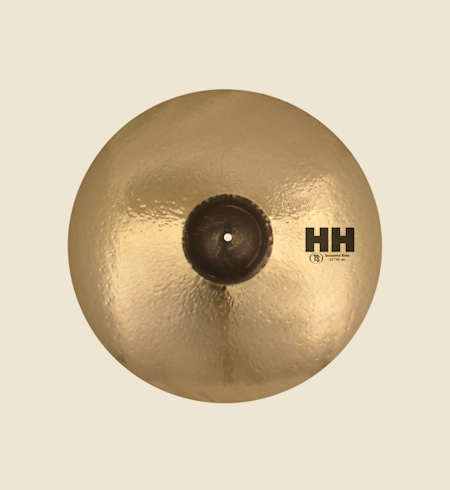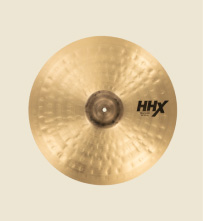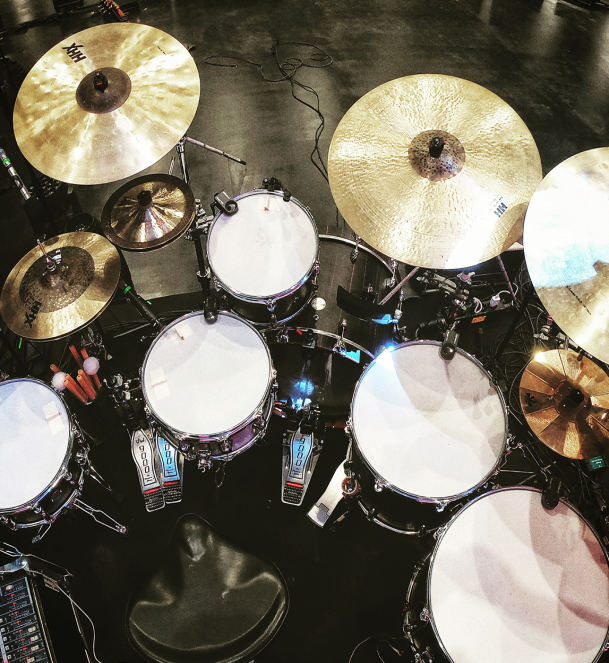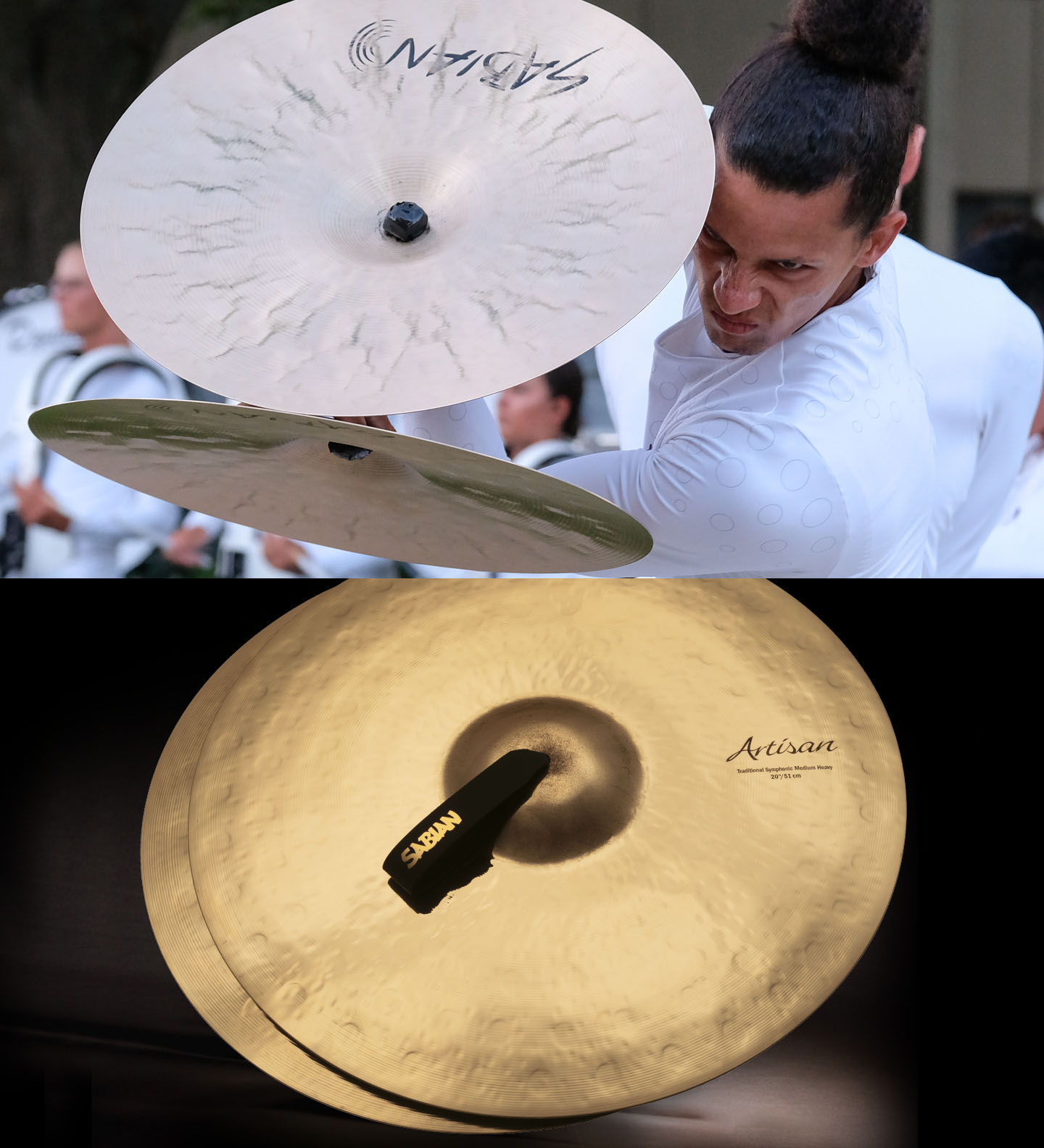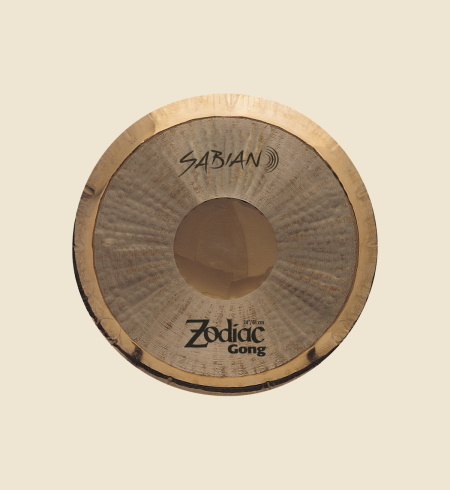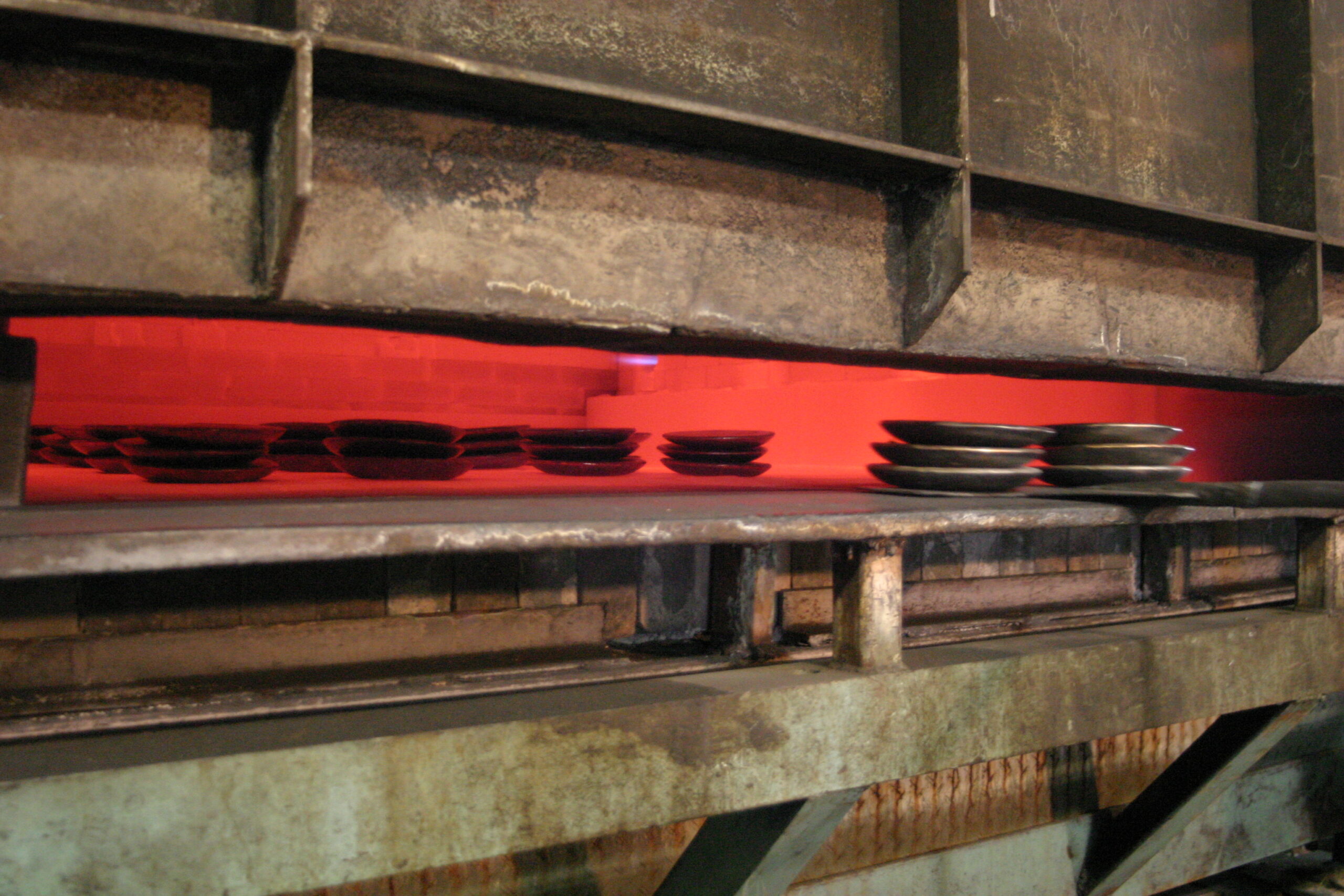SABIAN’s process of cymbal making is a meticulous and intricate one, with each step calculated to produce the best possible sound. After the first stage of production, large metal castings forged in the fires of the foundry are cooled and hardened before being transported to the factory oven room. Here, they are separated by weight and examined for any impurities, to ensure minimal waste based on their final intended dimensions. Because everything comes to the surface in the melting process, castings with impurities may be subject to a quick grind on their top sides.
To transform the thicker castings into the large, flat blanks required to create cymbals, each one is heated and passed through a rolling mill, with that process repeated between 6-12 times. As the space between the rollers decreases, each casting is squeezed to within a thousandth of an inch of the finished cymbal thickness. Following their final pass, these now large, black blanks are left to cool and harden.
“Once they have a large inventory of castings, the oven crew would come grab a batch from 50-200 depending on the size of the cymbals we’re making,” said Mark Love, SABIAN’s Director of Research and Development. “It takes about 45 minutes for them to heat up so they’re cherry red to go through the rolling mill. They go through and get a little thinner, then they’re put back in the oven. It takes less and less time to heat them up because they retain so much heat. Each time through, they turn the blanks 90 degrees, which keeps them round and strengthens them. It kind of interweaves the grains of the metal.”
Once the blanks have been rolled to their proper thickness and cooled, they’re heated again. At that time, one of SABIAN’s eight distinctly sized bell (or cup) shapes is pressed into their center, forming them into the classic cymbal shape. Blanks are then heated once more before being plunged into cold water, which activates a secret tempering process. By rapidly cooling the metal, workers actually change its molecular structure, resulting in a tough but flexible material that gives SABIAN cymbals their unique combination of strength and musicality.
“Tempering actually softens the metal, because before they’re tempered you could break them up like a piece of glass, and after that they’re very flexible and durable,” Love said. “And you can flex them and almost bend them in a circle, and they won’t break. Whereas, if you don’t get the temper just right, they’re more prone to breakage and brittle.”
After the tempering process, the center point is drilled in each blank, before they’re cut down to the approximate size of the intended finished cymbal. It’s at this point that SABIAN’s innovative designs come into play, with the company’s skilled artisans manipulating blanks into the specific shapes and dimensions called for by those designs.

